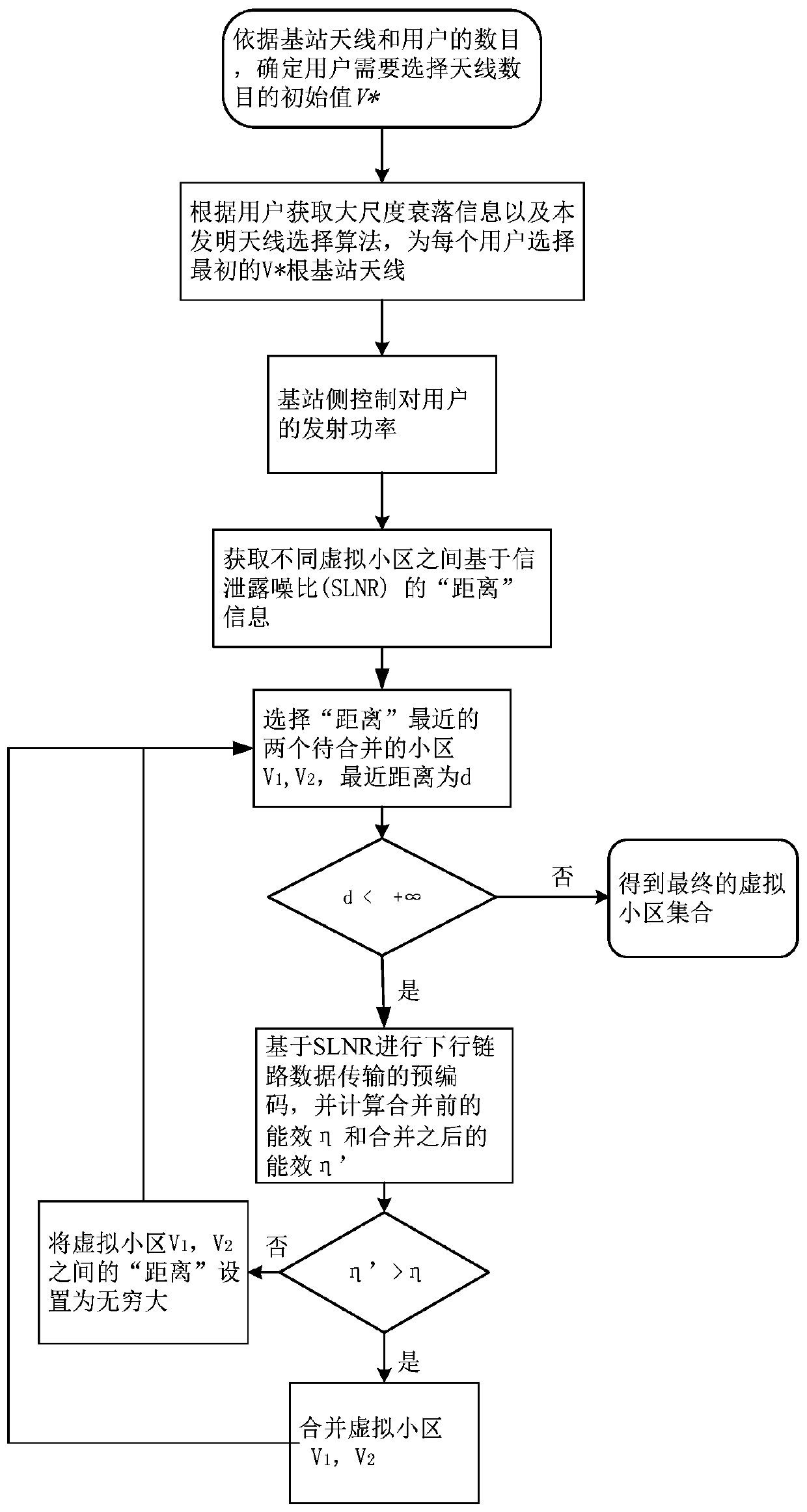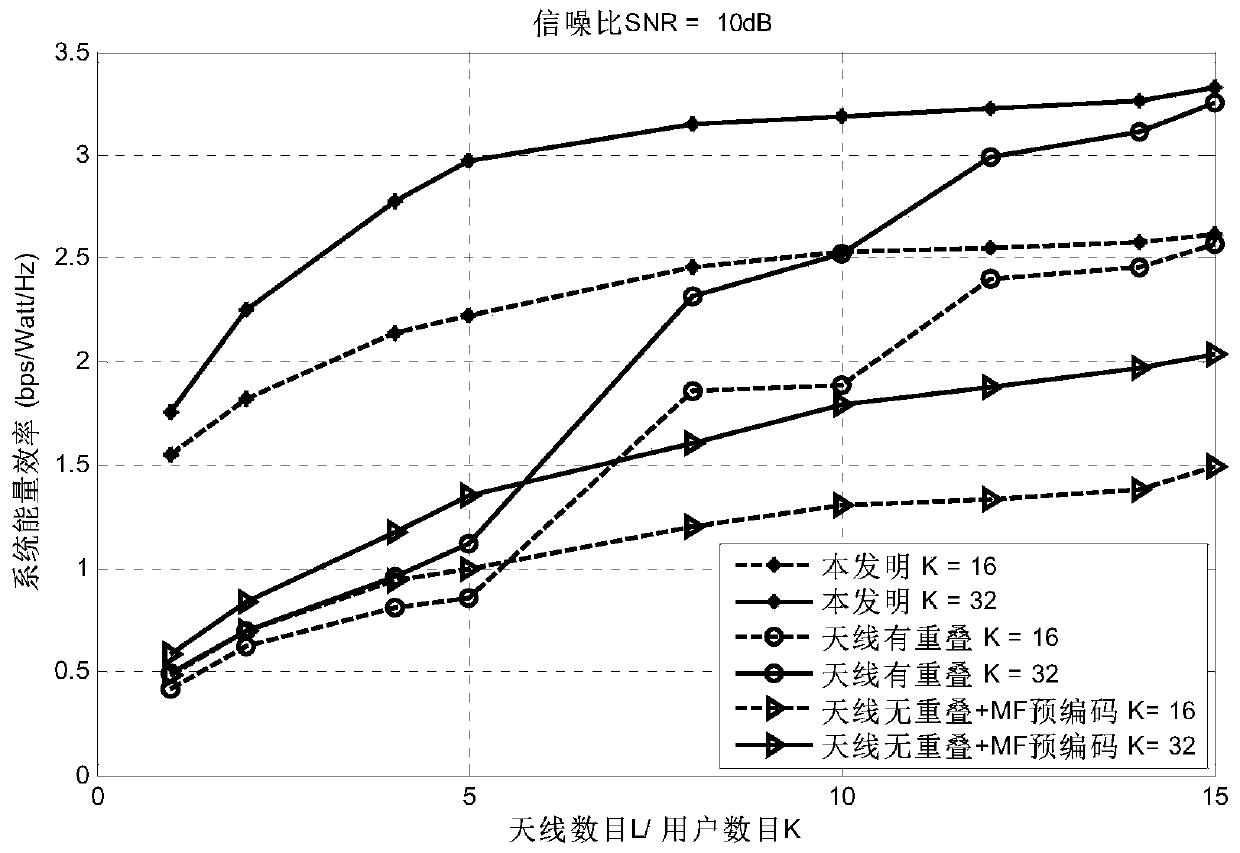An Energy Efficient Transmission Method Based on Antenna Selection in Distributed Systems
A distributed system and antenna selection technology, applied in the direction of advanced technology, energy consumption reduction, wireless communication, etc., can solve problems such as energy consumption and system energy efficiency reduction
- Summary
- Abstract
- Description
- Claims
- Application Information
AI Technical Summary
Problems solved by technology
Method used
Image
Examples
Embodiment Construction
[0059] The present invention will be further explained below in conjunction with the accompanying drawings and specific embodiments.
[0060] Such as figure 1 As shown, an energy-efficient transmission method based on antenna selection in a distributed system first determines the initial value V* of the number of antennas that users need to select according to the number of base station antennas and users, and then obtains each Each user arrives at information such as the large-scale fading factors of all base station antennas, and selects initial V*root base station antennas for each user according to the antenna selection algorithm of the present invention, wherein the antennas selected by each user are not repeated, and each user selects and the base station antenna it serves as a virtual cell v-cell; then obtain the SLNR of each user between different v-cells, and merge different v-cells based on the algorithm of the present invention, so that the energy of the system afte...
PUM
 Login to View More
Login to View More Abstract
Description
Claims
Application Information
 Login to View More
Login to View More - R&D
- Intellectual Property
- Life Sciences
- Materials
- Tech Scout
- Unparalleled Data Quality
- Higher Quality Content
- 60% Fewer Hallucinations
Browse by: Latest US Patents, China's latest patents, Technical Efficacy Thesaurus, Application Domain, Technology Topic, Popular Technical Reports.
© 2025 PatSnap. All rights reserved.Legal|Privacy policy|Modern Slavery Act Transparency Statement|Sitemap|About US| Contact US: help@patsnap.com



